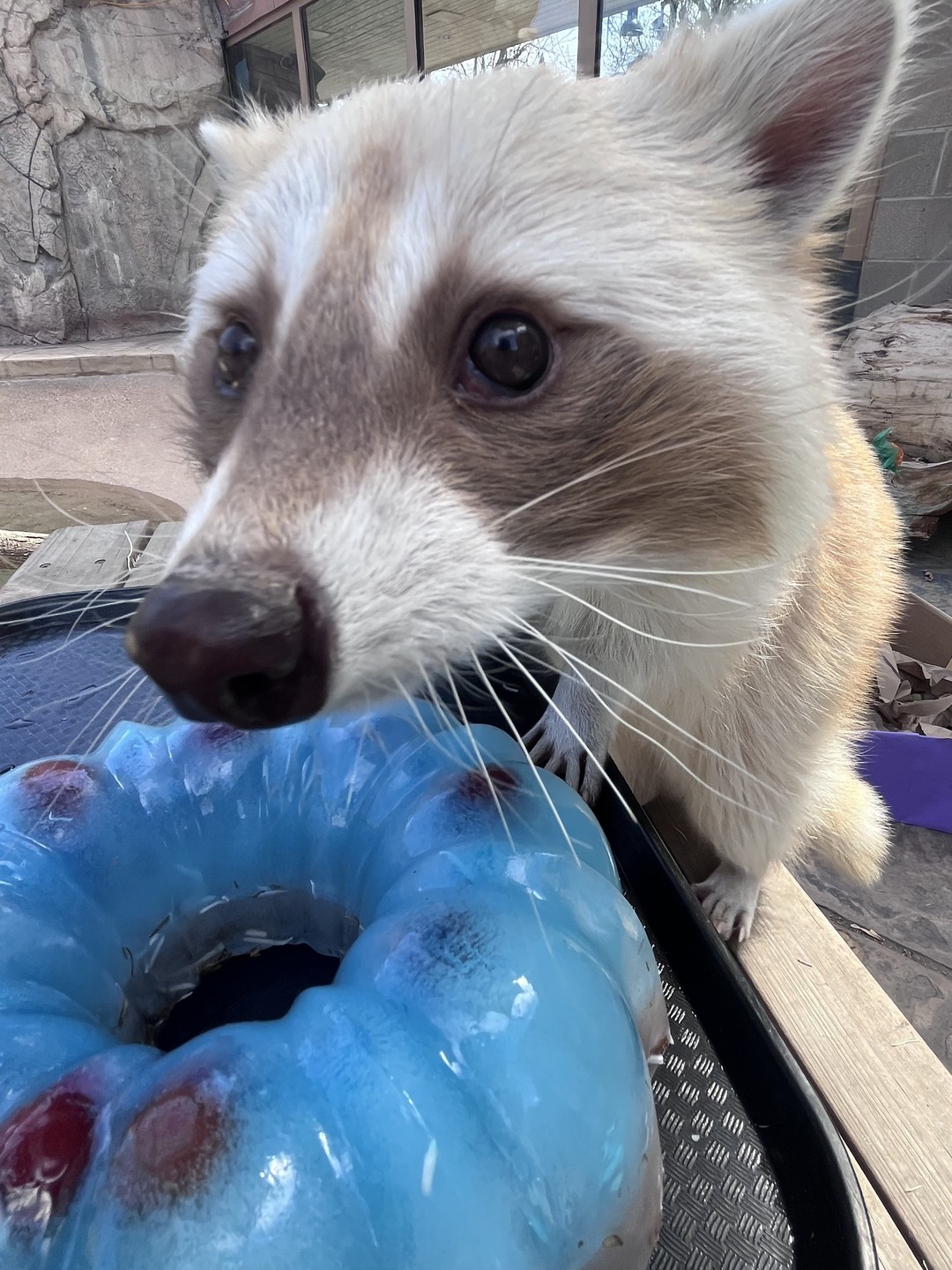- The significance of leucistic raccoons, Cashew and Pecan, and their role in wildlife conservation.
- The role of enrichment in the care and well-being of zoo animals.
- The celebration practices for animal birthdays and their importance in public education and wildlife awareness.
- An exploration of diet and nutrition in raccoon care within zoological environments.
- Promoting conservation through public engagement and education using notable animal residents.
Leucistic raccoons such as Cashew and Pecan captivate audiences with their distinct appearance and fascinating genetic traits. These raccoons are essential ambassadors in wildlife conservation and zoo education. Leucism is a genetic mutation resulting in partial loss of pigmentation, giving animals like Cashew and Pecan their uniquely pale coloration distinct from albinism. Though common raccoons appear gray and black, leucistic raccoons boast a striking white coat and blue eyes, catching the curiosity of many zoo visitors. By showcasing traits that differ from the norm, these raccoons engage the public, sparking discussions about biodiversity and the importance of preserving genetic variances within species.
Moreover, the presence of Cashew and Pecan in a zoological setting serves an educational purpose. It emphasizes the biological diversity and genetic variations existing within wild populations. This understanding encourages visitors to appreciate the complexities of nature and recognize the significance of protecting various life forms in their habitats. Zoos serve as important venues for education and awareness, with animals like these raccoons functioning as vital tools in disseminating conservation messages.
The care for zoo animals such as Cashew and Pecan extends beyond basic needs, focusing on a rich program of enrichment that supports their physical and mental well-being. Enrichment activities are fundamental to the care strategies in zoos, aiming to stimulate and challenge animals, fostering natural behaviors and keeping their minds active. For Cashew and Pecan’s birthday, the animal care team provided various stimuli, including presents filled with beloved treats such as biscuits and vegetables. These gifts encourage exploration and problem-solving, vital activities that mimic the challenges these creatures would face in the wild when searching for food and assessing potential threats or opportunities.
Additionally, providing a celebratory ice cake made from pineapple juice and cherries is not merely a festive treat but a thoughtful approach to introducing variety and enjoyment. This frozen delight serves to cool the animals during warm weather while enticing their senses with unique flavors and textures. By engaging raccoons in such activities, keepers ensure that life within the confines of a zoo is dynamic and fulfilling, offering an ever-changing array of experiences that promote overall health.
Animal birthdays, such as the fourth celebration for these charismatic raccoons, hold educational significance and serve as conduits for connecting the public with wildlife. These events foster deeper connections between zoo visitors and animals, allowing the public to witness firsthand the care involved in maintaining healthy, thriving exotic species. When arranged thoughtfully, these celebrations raise awareness about conservation issues and the unique circumstances concerning species survival in the wild.
These celebrations address an essential goal for modern zoos: stimulating public interest and empathy for animals. By foregrounding notable residents, such as Cashew and Pecan, zoos create narratives that emphasize the importance of conservation work. Through storytelling, visitors can understand the challenges these species face due to habitat loss, climate change, and human activity. The visibility of leucistic raccoons during their birthday celebration can prompt conversations about these crucial topics, engaging multi-age audiences in the larger dialogue of environmental stewardship.
Diet and nutrition play a crucial role in maintaining the health of raccoons, particularly when under human care. In the wild, raccoons are opportunistic omnivores, consuming a varied diet that includes fruits, nuts, insects, and small animals. In captivity, these dietary options are replicated to adhere to their nutritional needs while ensuring diversity and excitement. In addition to biscuits and veggies offered during their celebration, routine diets are carefully constructed to sustain proper energy levels and health.
Understanding dietary needs is fundamental for zookeepers who continuously balance between dietary management and enrichment. Special treats, like those provided during birthdays, are not random but part of a deliberate strategy to mirror raccoons’ natural eating habits. These dietary practices help nurture healthier animals and facilitate educational opportunities where visitors learn about species-specific needs.
Public engagement through events featuring animals like Cashew and Pecan strengthens conservation efforts. By participating in these educational experiences, the public becomes more informed about environmental issues and potential solutions. The unique presence of leucistic raccoons emphasizes this collaboration between zoos and the community. These animals, though different in appearance, symbolize crucial lessons about the acceptance of biological diversity and a healthy ecosystem.
As keepers work diligently to care for such fascinating creatures, the ultimate goal remains the same: safeguarding wildlife diversity and inspiring future generations to engage in meaningful conservation work. Recognizing animal birthdays and celebrating species all underscore the narrative of zoonotic education and stewardship. Through these initiatives, people learn to appreciate humans’ interconnectedness with nature and the importance of protecting our planet’s extraordinary array of life.
*****
Source Description
Happy 4th Birthday to Cashew and Pecan! 🦝🦝 On Saturday our iconic leucistic raccoons celebrated with special enrichment: presents packed with their favorite biscuits and veggies, an ice cake made of pineapple juice and cherries, and scented paper flower bouquets, courtesy of their animal care team. 💚 Here’s to another year of curiosity, cleverness and irresistible cuteness from these two!

